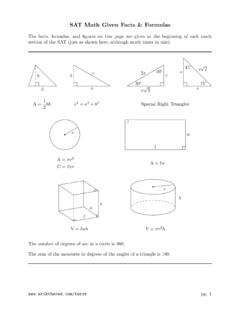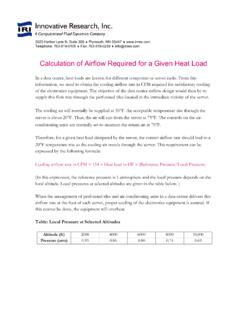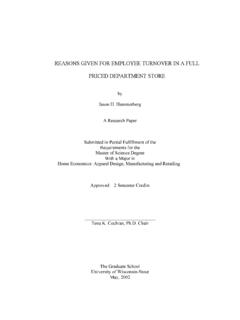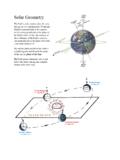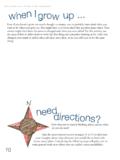Transcription of The effect of wearer stubble on the protection …
1 Prepared by the Health and Safety Laboratory for the Health and Safety Executive 2015 Health and Safety ExecutiveThe effect of wearer stubble on the protection given by Filtering Facepieces Class 3 (FFP3) and Half MasksRR1052 Research ReportShirley Frost BSc and Anne-Helen Harding BSc MSc MPhil PhDHealth and Safety LaboratoryHarpur HillBuxtonDerbyshire SK17 9 JNHSE Inspectors routinely come across workers with various degrees of stubble growth using respiratory protective masks, despite guidance to the contrary. This research studied the effect of 0-7 days stubble growth on the protection given by FFP3 filtering facepieces and half male volunteers took part, each testing four masks. For most, three different design FFP3 and one half mask were tested, selected from seven models of FFP3 and 2 half masks. Fit tests were carried out immediately after shaving and repeated six times during the following week, without further shaving.
2 Results showed that the effect on protection was quite specific to the mask/ wearer combination. protection could be significantly reduced where stubble was present, beginning within 24 hours from shaving, and generally worsening as facial hair grew. Statistical analysis predicted this could reach an unacceptable level for all of the masks tested. While some individual wearers did grow some stubble without significantly reducing protection with some masks, this was unpredictable and it would not be practical to conduct the necessary testing to confirm this for every individual wearer . The current guidance advising being clean-shaven in the area of the mask seal is report and the work it describes were funded by the Health and Safety Executive (HSE). Its contents, including any opinions and/or conclusions expressed, are those of the authors alone and do not necessarily reflect HSE policy.
3 The effect of wearer stubble on the protection given by Filtering Facepieces Class 3 (FFP3) and Half MasksHSE BooksHealth and Safety Executive Crown copyright 2015 First published 2015 You may reuse this information (not including logos) free of charge in any format or medium, under the terms of the Open Government Licence. To view the licence visit , write to the Information Policy Team, The National Archives, Kew, London TW9 4DU, or email images and illustrations may not be owned by the Crown so cannot be reproduced without permission of the copyright owner. Enquiries should be sent to help of the following is acknowledged here and is very much appreciated: n The valued members of the HSL PPE test subject volunteer team who gave their time, effort and energy and without whom the work would not have been The technical contribution made by Ms Rhiannon Mogridge of the PPE team in with testing, and leading many of these test EXECUTIVE SUMMARY wearers of tightfitting RPE facepieces are advised to be clean-shaven in the area of the faceseal as explained in the guidance supporting Health and Safety legislation.
4 However, HSE Inspectors routinely come across workers wearing tightfitting facepieces who are not clean shaven and have various degrees of stubble growth of a few days after shaving. Whilst tests have previously been carried out which demonstrate that facial hair is detrimental to the protection given by reusable facepieces, there is little or no information on the impact of facial hair growth on the level of fit, and hence the degree of protection , given by disposable filtering facepieces. The purpose of this research was to investigate the effect of early (0-7days) stubble growth on the protection given by filtering facepieces and half masks. Main findings Test were carried out using a range of facepieces including seven models of FFP3 with different overall designs and types of faceseal and two different half masks.
5 Repeat fit tests were conducted over the course of one week from clean-shaven on 15 different male volunteer test subjects each using four of the facepiece models, aiming to include each type of faceseal design. Results are presented as percentage inward leakage in graph format to identify trends, and were statistically analysed for changes as stubble grew. Photographs recorded the appearance and development of stubble growth. The results of these tests indicate that with the selected filtering facepieces and half masks the protection given to the wearer may be reduced where stubble is present. This stubble effect may begin within 24 hours from shaving, and increases as facial hair grows up to at least seven days. Percentage inward leakage varied for test subjects and facepieces. For some facepieces for several test subjects, percentage inward leakage increased significantly (to 3-6% or higher) by the end of day 4.
6 With other facepieces, inward leakage increased for about 50% of wearers as stubble grew, but for other wearers no significant change in inward leakage occurred. The statistical analysis showed that by the seventh day, the predicted inward leakage may reach an unacceptable level (greater than 1%) in all of the facepieces tested. For some of the facepieces tested increased inward leakage occurred early in the trial period, with the percentage inward leakage increasing from the first day after shaving. The research provides evidence that the effect of stubble is quite variable in the degree of increased face seal leakage which occurs with the various masks. The evidence suggests that the extent of face seal leakage is quite specific to the facepiece and test subject combination and is unpredictable. The study showed that individuals experienced high levels of inward leakage with some facepieces while, for other facepieces, stubble had only a moderate or even little effect on inward leakage.
7 Work activities may have a further influence on protection . Specifically where there is a frequent need to move and hold the head position, for example in some types of construction work, this may compromise the protection to a greater extent than more sedentary work. Although, in theory, the research suggests that it may be possible for individual wearers to grow some stubble without loss of protection with some masks, the outcome cannot be predicted in advance and it would not be practical to conduct the necessary testing on each individual wearer in order to confirm this. The results of this work support the statement given in the European Standard EN 529 (annex ) which advises that tightfitting facepieces should not be selected where there is unshaven iii hair in the area of the faceseal. The definition of unshaven given is In this context unshaven means hair which has not been shaved within the previous 8 hour period prior to the work shift and this would seem appropriate.
8 The research also reinforces the guidance which supports UK Health and Safety legislation that workers should be clean shaven in the area of the faceseal when wearing tight fitting respirators. ivCONTENTS PAGE 1. INTRODUCTION .. 1 Background Information 1 Project Aim 1 Project Objectives 7 2. METHODOLOGY .. 3 Choice of Test Method 3 Test Subjects 3 Facepieces 4 Test Protocol 53.
9 RESULTS .. 8 Percentage Inward leakage 8 Summary Discussion of Results 28 4. CONCLUSIONS .. 32 5. REFERENCES .. 33 6. APPENDICES .. 34 Appendix A: Detailed graphs 34 Appendix B: Photographs 2 days 67 Appendix C: Photographs 7 days 75 Appendix D: stubble Measurements 83 Appendix E: Statisticians Report 84 1. INTRODUCTION BACKGROUND INFORMATION Tightfitting facepieces are an important part of many types of respiratory protective equipment (RPE). For such RPE to work effectively it is important that the facepiece seals well to the wearer s face. Tightfitting facepieces include filtering facepieces, half masks and full facemasks, including facemasks for breathing apparatus.
10 The presence of a good seal between the respirator facepiece and the wearer s face, ensures that ambient air will be directed through the filter(s) as the wearer breathes in and/or, with powered devices, as a fan pushes air through. The filter (if correctly selected) removes hazardous substances allowing the wearer to breathe cleaner air. However, the filter material exhibits some resistance to air flowing through it such that even a very small gap between the respirator facepiece and the wearer s face, is an easier route for ambient air to get inside the facepiece, and hence is the route taken. Ambient air passing through a faceseal gap will take with it any hazardous substance present, to be breathed in by the RPE wearer , hence reducing the effectiveness of the RPE and the protection given . This fact is often not understood or appreciated by typical RPE users.










